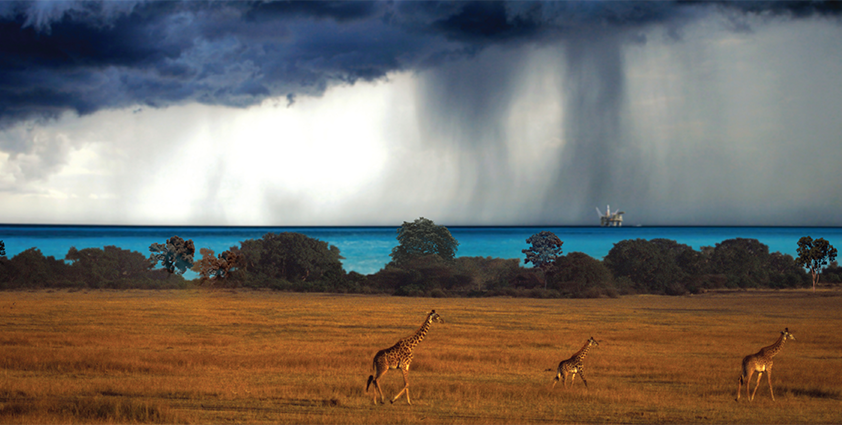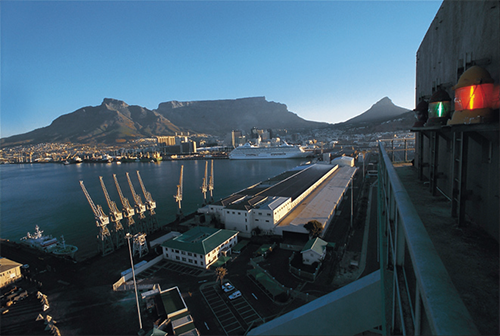
SAOGA: Uniting 170 Companies in a Bold Venture to Propel South Africa’s Offshore Future
Strength in numbers
Responsible for promoting and guiding development of the offshore industry in South Africa, the South African Oil & Gas Alliance (SAOGA) is a partnership between the country’s public and private sectors with a membership roster of approximately 170 private companies.
This collection of suppliers, service providers and international partners was established seven years ago with a primary focus on the upstream oil and gas value chain. During this time it has utilised South Africa’s geographical and economic position to establish exploration and production, repair and maintenance, fabrication and construction, and new project development services within the region.
SAOGA’s key responsibilities to its members and the regional industry can be broadly defined by four categories: improving the capabilities of local companies to help them compete in the upstream sector; working with governmental and parastatal bodies to ensure that infrastructure and public policy create an attractive environmentfor suppliers; marketing and public relations duties to promote the region; and finally to facilitate the increasing presence of foreign upstream organisations by acting as a primary point of contact.
One major change in recent years has been the privatisation of the ship repair market, with repair facilities across the country being transferred into privately managed concessions. CEO and executive director of SAOGA, Warwick Blyth, talks about the A-Berth initiative in Cape Town Harbour, a model example of this process: “Recently we re-opened the A-Berth quay facility after putting it through a significant upgrade, turning it into a fit-for-purpose oil andgas service upgrade facility for rigs and vessels coming into the port. It is now a 40,000 square metre facility with new office space, canteens and workshop storage facilities, a crawler crane and underpinning to handle greater loads.
“The whole facility is being leased by a private company that in turn has split A-Berth into two parts, one half leased to major ship repair company DCD Dorbyl and the other turned into a common access area available to anyone. DCD Dorbyl has a permanent base there and what it has done is organised a consortium of leading contractors around them. Together they’ve branded themselves the A-Berth Consortium and have opened for business under that label, providing a full complement of repair and maintenance services for upstream operations. Meanwhile, until 2014, the common access area is open to any other player that wants to come in and manage its own projects here.”
 Another paradigm shift in the country’s offshore repair industry has been the transfer of dry docks to private management. Whilst ports continue to be run by the Government body Transnet National Ports Authority (TNPA), in September 2010 the repair facilities of all ports throughout the country were tendered to private organisations on long-term leases. Cape Town and Durban in particular, South Africa’s two largest harbours, have gained interest from consortia of local industry players seeking to manage their dry dock areas. “This should result in a much better utilisation of the facilities,” comments Warwick. “I expect to see better marketing as well as clearer rules to guide their operation. It should generally lead to a big upgrade in user experience and, consequently, a significant increase in activity as well.”
Another paradigm shift in the country’s offshore repair industry has been the transfer of dry docks to private management. Whilst ports continue to be run by the Government body Transnet National Ports Authority (TNPA), in September 2010 the repair facilities of all ports throughout the country were tendered to private organisations on long-term leases. Cape Town and Durban in particular, South Africa’s two largest harbours, have gained interest from consortia of local industry players seeking to manage their dry dock areas. “This should result in a much better utilisation of the facilities,” comments Warwick. “I expect to see better marketing as well as clearer rules to guide their operation. It should generally lead to a big upgrade in user experience and, consequently, a significant increase in activity as well.”
With offshore Angola on Africa’s west becoming a major centre for oil and gas activity, and six significant discoveries in Mozambique and Tanzania on the continent’s east coast, the coming years for sub-Saharan Africa’s oil and gas industry looks vibrant. South Africa plays an important role in this future on account of its geographic and socio-political position. Being centrally located on the continent’s coastline, the country is ideally placed for service and supply companies to become involved with the two major regional developments as well as any future activity throughout sub-Saharan Africa. Just as important, however, is South Africa’s economic environment. “It is one of the few places in the region where you can operate a reasonably stable, sophisticated business,” Warwick says.
He sums up the potential of this combination: “I see a real opportunity to build a hub for Africa’s oil and gas market within South Africa as it already is for many other industries such as retail, banking and telecommunications. SAOGA is telling operators that as countries south of Nigeria become increasingly important, it is inevitable that an on-continent hub will be established because otherwise the closest stable point is Europe or the Middle East. South Africa is the natural place for that. There is already a fairly good supply chain and increasing numbers of companies are establishing regional offices here.”
Two deepwater ports involved in this move toward becoming an offshore upstream hub are Saldanha Bay, located approximately 100 kilometres north of Capetown, and the Coega on the Eastern Cape. Saldanha Bay’s location on the southwest coast, coupled with vast amounts of surrounding undeveloped land, means it has received a lot of interest for further development “Already we have a fabrication yard there,” comments Warwick, “and currently I see a lot of interest for a base that could be used as storage facilities for equipment and instruments. A fairly significant West African base operator is the process of leasing land there and we are just waiting for the public enterprise that’s involved to sign off the final papers.”
Coega, meanwhile, is a newly developed port with freezone statusthat has been established primarily as a container port for sending and receiving to and from the Far East. This too has a large amount of undeveloped land around the port making it attractive for rig/ship repair,logistics and other upstream services serving East Africa’s offshore industry.
“My opinion is that we already have a large number of companies here that are very able to play into the oil and gas upstream value chain but not yet necessarily involved to their full capabilities,” Warwick explains. “Companies such as KBR and Mott MacDonald know a lot about running resource projects, processing facilities, plant construction and maintenance and other services on the African continent, so SAOGA’s role is to encourage them to station their oil and gas activities in South Africa. Because operators involved with big projects rarely take a chance on unknown variables, however, it will be important for local companies to align and work with players that already have the confidence of major operators.”
South Africa’s role in the rapidly emerging sub-Saharan oil and gas market will become ever more important in the future and SAOGA will be at its heart. The privatisation of the ship repair market is the first step towards establishing the country as hub for the entire continent, whilst the construction of new ports and facilities will undoubtedly attract the attention of new private investment.
Warwick concludes with a positive outlook for the future of SAOGA and South Africa: “There has been tremendous development over the last 12 months both intuitionally and in the level of activity. Our goal for this year is to really push forward and see if we can help foreign companies establish themselves here, doing the assessments they need and working with the sector to ensure the ongoing increase of productivity. By improving overall service levels through initiatives and co-operation, clients will have a better experience than they’ve ever had here before.”
South African Oil & Gas Alliance
Services: Organisation, promotion and education